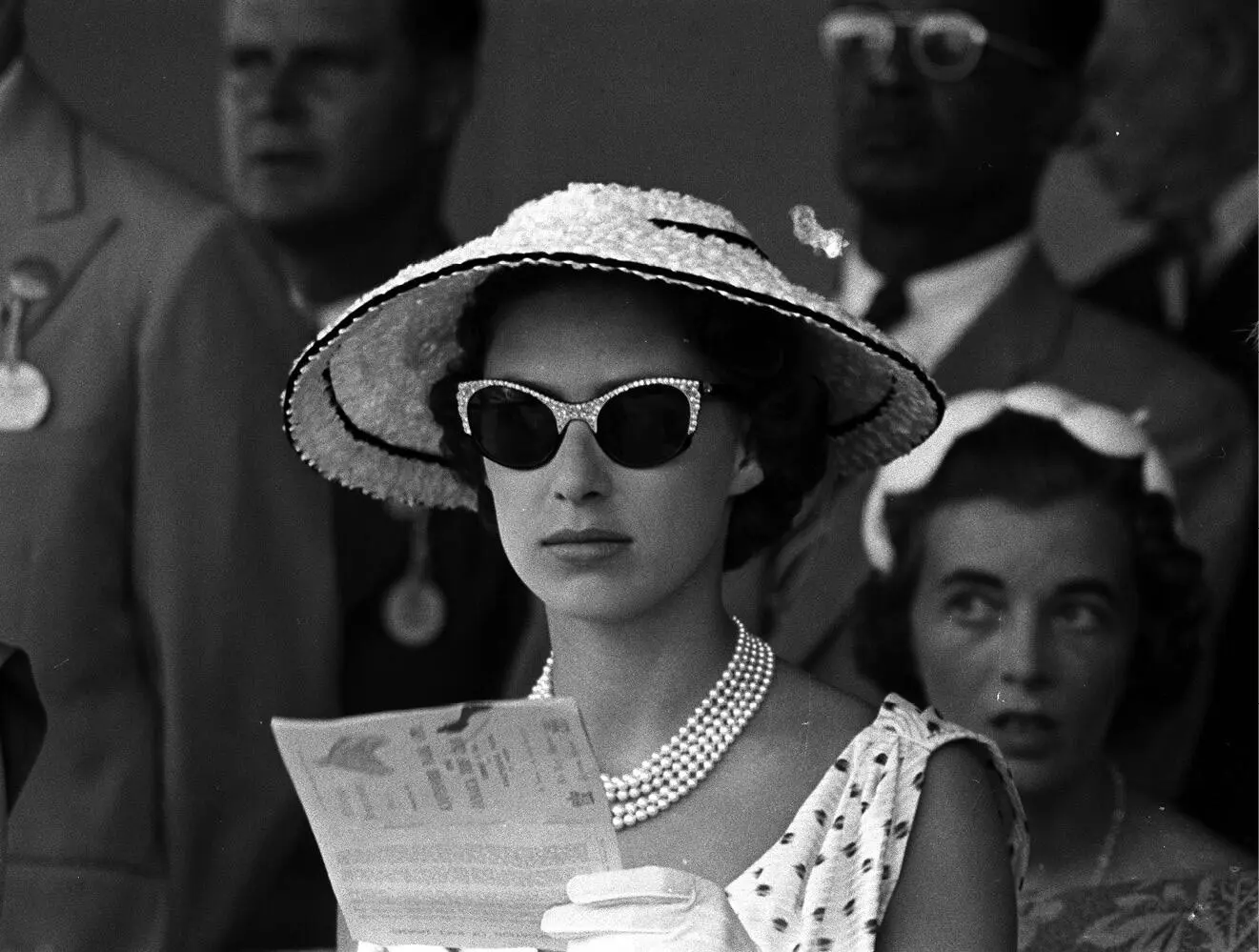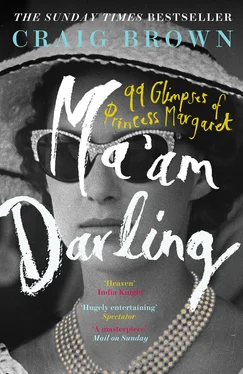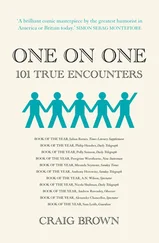
(Popperfoto/Getty Images)
The Princess was drawn to theatrical types, and they to her; they detected something camp in her, something of the pantomime dame, some element of irony in the way she adopted her royal airs, as though with a wink and a nudge she might at any moment reveal her haughty persona to have been no more than a theatrical tease. She enjoyed playing with the boundaries of being royal, popping out from under the red silk rope, and then, just as abruptly, popping back beneath it, returning to her familiar world of starch and vinegar. The Princess would draw bohemians to her with a smoky, nightclub worldliness, mischievously at odds with her position. Then, having enticed them in and helped them loosen up, she would suddenly and without warning snap at them, making it clear that by attempting to engage with her on equal terms they were guilty of a monstrous presumption.
A keen theatregoer, she went to see Derek Jacobi as Richard II at the Phoenix Theatre in 1988, sending word asking him to remain onstage at the end of the performance, so that she could meet him.
‘I did, and she kept me waiting,’ he remembered. ‘She had gone to hospitality, had a couple of whiskies, and then tottered through to say hello onstage half an hour later.’
After another show, she invited him to dine with her and some ballet friends at Joe Allen’s restaurant in Covent Garden. ‘There were eight of us and I sat next to her. She smoked continuously, not even putting out her cigarette when the soup arrived, but instead leaning it up against the ashtray. We got on terribly well, very chummy, talking about her mum and her sister, and she really made me feel like I was a friend, until she got a cigarette out and I picked up a lighter and she snatched it out of my hand and gave it to a ballet dancer called David Wall.
‘“You don’t light my cigarette, dear. Oh no, you’re not that close.”’
Bohemian society in sixties London was formed of an unresolved mix of egalitarianism and snobbery. Kenneth Tynan was as devoted to Princess Margaret as he was to the British working class, though he took care to keep the two enthusiasms separate. Tracy Tynan remembers her father arguing that her birthday party should be postponed because Princess Margaret would be out of town. But her presence at his arty get-togethers was unsettling. An actress who was sometimes a guest told me that the assembled iconoclasts – actors, writers, artists, musicians – would kowtow to Her Royal Highness while she was present, only to make fun of her the moment she left, imitating her squeaky, high-pitched voice, her general ignorance, her cackhanded opinions, her lofty putdowns, her air of entitlement. If a fellow guest’s over-familiarity had prompted her to execute one of her ‘Off with his head!’ reprimands, then they would have something extra to giggle about. The presence of the Princess would endow a party with grandeur; her departure would be the signal for mimicry to commence. Beside these laughing sophisticates, the Princess could often appear an innocent.
The baby had been expected any time between 6 and 12 August 1930. The mother, HRH the Duchess of York, planned to give birth to this, her second child, at her family seat, Glamis Castle. This was disappointing news for the home secretary, J.R. Clynes, who had been looking forward to a family holiday in Brighton in the first weeks of August. A socialist who had started work in a cotton mill at the age of ten, Clynes now found himself bound by law to be at hand for the royal birth.
Some had suggested that Clynes could make a last-minute dash from London to Scotland the moment news of the first contractions came through, but his stuffy ceremonial secretary, Harry Boyd, was having none of it: if the birth was not properly witnessed by the home secretary, then the baby’s relatively high place in the line of succession – third for a boy, fourth for a girl – would be placed in jeopardy. Nothing should be left to chance.
So, like it or not, Boyd and Clynes boarded the train to Scotland in good time, arriving at Cortachy Castle, where they would be staying, promptly on the morning of 5 August. A special telephone wire had been installed from Glamis to Cortachy, with a dispatch rider at hand in case the wire broke down.
The two men were to have a long wait. Clynes, quiet and retiring, occupied his time with long walks, sometimes in the company of his hostess, Lady Airlie. Boyd, on the other hand, was more worked-up; he preferred to stay indoors, fearful lest he miss the vital phone call. Nor did he rule out the possibility of an accident, or some sort of muddle-up, or even sabotage. Had he spent too long out East? ‘I could not help feeling that his long residence in China was inclining him to view the situation in too oriental a light,’ Lady Airlie recalled in her memoirs.
On the 11th, the three of them – the home secretary, the countess, the civil servant – were on red alert, sitting up all night, ‘sustained by frequent cups of coffee’, but it was a false alarm. On the 14th, Boyd lost his temper when Clynes said he was thinking of going sightseeing with Lady Airlie; on the morning of the 21st, ‘wild-eyed and haggard after sitting up all night’, Boyd telephoned Glamis for any news, and was told there was none. Unable to contain his nerves, he stomped out into the garden and started kicking stones.
That same evening, just as they were dressing for dinner, the call from Glamis at last came through. Boyd, wearing only a blue kimono, a souvenir from his China days, was caught on the hop. ‘What? In an hour? We must start at once!’ With that, he leapt into his suit and rushed downstairs, where he found Clynes already waiting in his coat and Homburg. ‘Just look at that, Boyd!’ said Clynes, pointing to the sunset. ‘In such a night stood Dido …’ But Boyd was in no mood for an impromptu Shakespeare recital, and pushed Clynes headlong into the waiting car.
They arrived at Glamis with barely half an hour to spare. At 9.22 p.m., attended by her three doctors, the Duchess gave birth to a baby girl. Once the baby had been weighed (6lbs 3oz), the home secretary was ushered into the bedroom to bear witness. ‘I found crowded round the baby’s cot the Duke of York, Lord and Lady Strathmore and Lady Rose Leveson-Gower, the Duchess’s sister. They at once made way for me, and I went to the cot and peeping in saw a fine chubby-faced little girl lying wide awake.’
The news that the King had another grandchild – his fourth – was greeted with forty-one-gun salutes from the Royal Horse Artillery in both Hyde Park and the Tower of London, together with the ringing of the bells of St Paul’s Cathedral and Westminster Abbey. The following evening, 4,000 people gathered in the Glamis village square and followed the Glamis Pipe Band up Hunter’s Hill as it played boisterous renditions of ‘The Duke of York’s Welcome’, ‘Highland Laddie’ and ‘The Earl of Strathmore’s Welcome’. With everyone gathered at the summit, two young villagers lit a six-hundred-foot-high brushwood beacon. Within minutes, its flames could be seen from miles around.
Princess Margaret was born in 1930, the same year as air hostess and newscaster entered the language, and died in 2002, when googling , selfie , blogger and weapons of mass destruction first appeared.
Is it just me, or do a remarkably high proportion of the words that share her birthday also reflect something of her character? Blasé first made the Channel crossing in 1930, subtly altering its meaning on the way: in its home country of France, it meant ‘sated by enjoyment’, while here in Britain it meant something closer to ‘bored or unimpressed through over-familiarity’. Also from France, or eighteenth-century France, came negligée , with that extra ‘e’ to show that it now meant a lacy, sexy dressing gown rather than an informal gown worn by men and women alike.
Читать дальше













